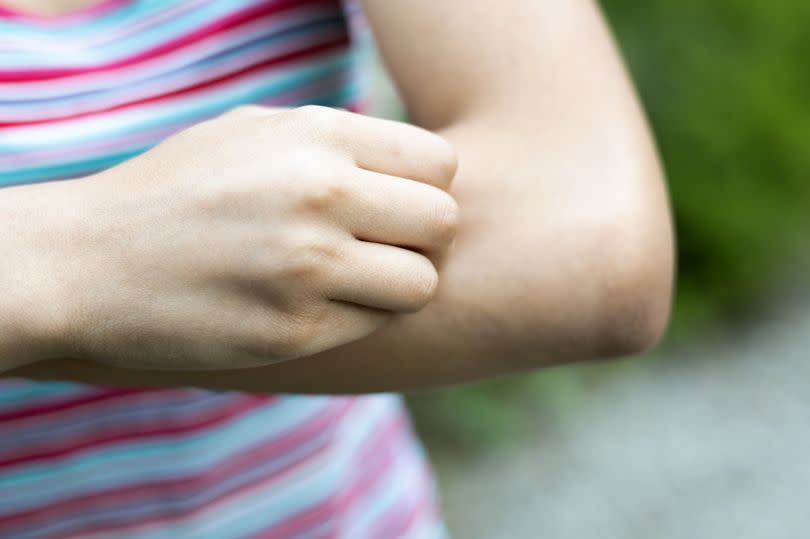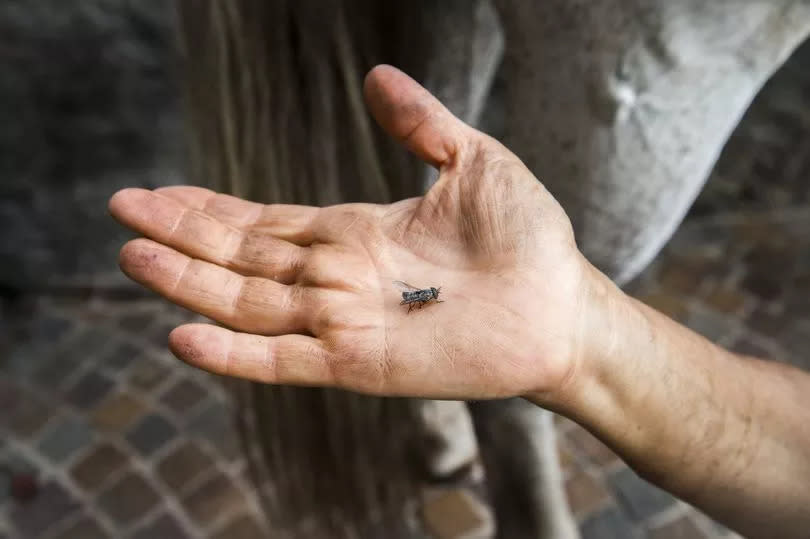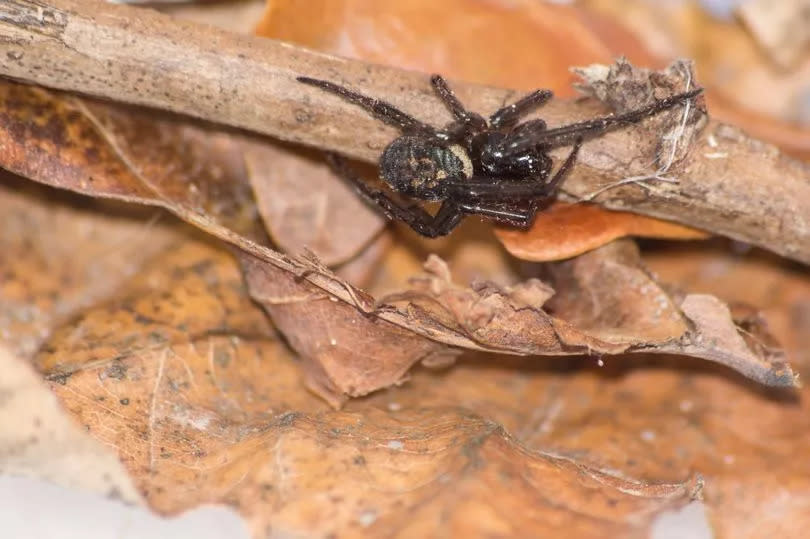Pharmacist explains how to tell which insect has bitten or stung you - and if it is serious

A pharmacist has warned people not to assume insect bites or stings are harmless as warmer weather approaches - as ignoring them could be life-threatening.
Something as simple as discolouration or a change in texture or feel of skin can be a silent indicator of the first signs of an underlying health condition, reports Bristol Live.
George Sandhu, Deputy Pharmacy Superintendent from Well Pharmacy, warned people to be vigilant when it comes to insect bites and stings.
The expert said: "Insect bites and stings are not typically serious and often improve within a few days. However, bites and stings can sometimes lead to infection or trigger a severe allergic reaction.
"Some insect bites can even transmit illnesses like Lyme disease from ticks, scabies from mites, and malaria from mosquitoes in certain parts of the world. Symptoms of an insect bite or sting usually include pain in the affected area and a swollen lump on the skin, which may appear red. It's essential to be vigilant."
Read on below for 10 of the most common insect bites and stings that could spark concern.
1. Wasp and hornet stings
Typically, a wasp or hornet sting will leave a small mark where the stinger has entered the skin. These can be life-threatening as it can cause an allergic reaction.
The sting can cause redness, pain and swelling for a few hours but some people may experience a mild allergic reaction that can last for up to a week.
In more serious cases, the sting can cause anaphylaxis - which leads to dizziness, breathing difficulties and a swollen mouth or face. You should dial 999 for emergency services if these symptoms occur.
2. Bee stings

This sting may feel similar to a wasp or hornet sting but the stinger from the bee is crucially left in the skin where you have been hit.
This sting can be life-threatening as people could be severely allergic to bees. You should remove the stinger by brushing or scraping it sideways with the side of a bank card or your fingernail.
You shouldn't use tweezers to pull out a stinger as more poison can be pushed into your body - also, make sure to wash the area with soap and water.
Bee stings can cause similar symptoms to wasp and hornet ones, including a mild allergic reaction.
However, the same serious allergies can occur which include breathing issues, dizziness and a swollen face or mouth. You should dial for an ambulance if these signs begin to show.
3. Mosquito bites
These bits are typically small, raised from the skin and can be very itchy - as well as life-threatening. Mosquito bites often cause small red lumps on the skin that are itchy.
Some people may develop fluid-filled blisters. While mosquitoes don't cause major harm across the UK, other parts of the world can see these insects spread diseases such as malaria.
You should seek medical attention straight away if you have been stung abroad and begin to develop worrying symptoms that include:
A high temperature
Chills
Headaches
Feeling sick
4. Tick bites
Ticks are small pests similar in size to spiders that attach themselves to the skin and burrow their heads into the body. Bites from these insects can be life-threatening as they carry a serious disease.
Tick bites are not usually sore so people may not realise they've been bitten right away. Symptoms include a small red lump on the skin, itchiness, swelling, blistering and bruising.
Ticks can sometimes carry a potentially serious infection called Lyme disease so they should be removed as soon as you notice them. A key sign of Lyme disease that has been caused by a tick bite is a rash that looks like a bullseye.
5. Horsefly bites

Being bitten by a horsefly can be painful as the bite is large and often bleeds - and they typically can become infected too.
While the bite can be sore, these insects are not life-threatening on their own. A horsefly bite can cause a red and raised area of skin that is painful.
Bites can also cause larger red, raised rash - called urticaria or hives - which causes symptoms like weakness, dizziness, wheezing and part of your body becoming swollen or puffy.
These bites can take a while to heal and can become infected in this time. You should speak to a doctor if you have any symptoms of an infection - which include pus, increasing pain, redness or swelling.
6. Midge bites
These bites are typically small and raised on the skin in bunches. Midge bites are not life-threatening but they can look similar to mosquito bites - which are serious.
These bites can cause small, red lumps that can be sore and very itchy and can sometimes swell up very quickly. Some people may also develop fluid-filled blisters.
7. Mite bites
These bites cause very itchy lumps on the skin and sometimes blisters - but they are not life-threatening.
Mites tend to bite uncovered skin but you could be hit on your stomach and thighs if your pet has mites and has been sitting on your lap.
Some mites can burrow into the skin and cause a condition called scabies - which is extremely contagious but not deadly.
8. Flea bites
Flea bites tend to be found in itchy groups below your knees and are not life-threatening.
Fleas from your loved pet can often bite below the knee and most commonly around your ankles. You could aos get bitten on your forearms if you've been holding or stroking your dog or cat.
9. False widow bite

While being bitten by a spider is uncommon in the UK, some native spiders - such as the false widow - are capable of handing out some nasty bites.
These bites can be life-threatening due to the likelihood of infection or a serious allergic reaction. Spider bites tend to leave small puncture marks on the skin which can cause pain, redness and swelling.
Some spider bites can cause dizziness, sweating or vomiting. If a bite becomes infected or you develop some severe allergic reaction symptoms then you should seek medical attention immediately.
10. Woodlouse spider
Similar to false widows, being bitten by a woodlouse spider is very uncommon - but on the other hand, it is not life-threatening.
If you are bitten, the symptoms shouldn't be severe and you could just experience some itchiness. If dizziness, vomiting and sweating does happen then speak to a GP.
If the bite does become infected or in a rare case, you develop a severe allergic reaction, then seek medical attention immediately.
Pharmacist George Sandhu added: "If you're uncertain about whether you've been bitten or stung by an insect, it's advisable to seek medical advice.
"Prompt removal of any stingers, ticks, or other foreign bodies, along with appropriate symptom management, can help alleviate discomfort and reduce the risk of complications. As part of the new Pharmacy First service, Pharmacists can offer advice and recommend suitable treatments for infected insect bites, which may include prescription strength medicines.
"They can also suggest over the counter antihistamines and pain relief to help alleviate symptoms. However, if symptoms worsen or if there are signs of a severe allergic reaction, such as swelling of the lips, throat, or difficulty breathing, immediate medical attention is necessary."
Don't miss the latest news from around Scotland and beyond - Sign up to our newsletter here.

 Yahoo News
Yahoo News 
